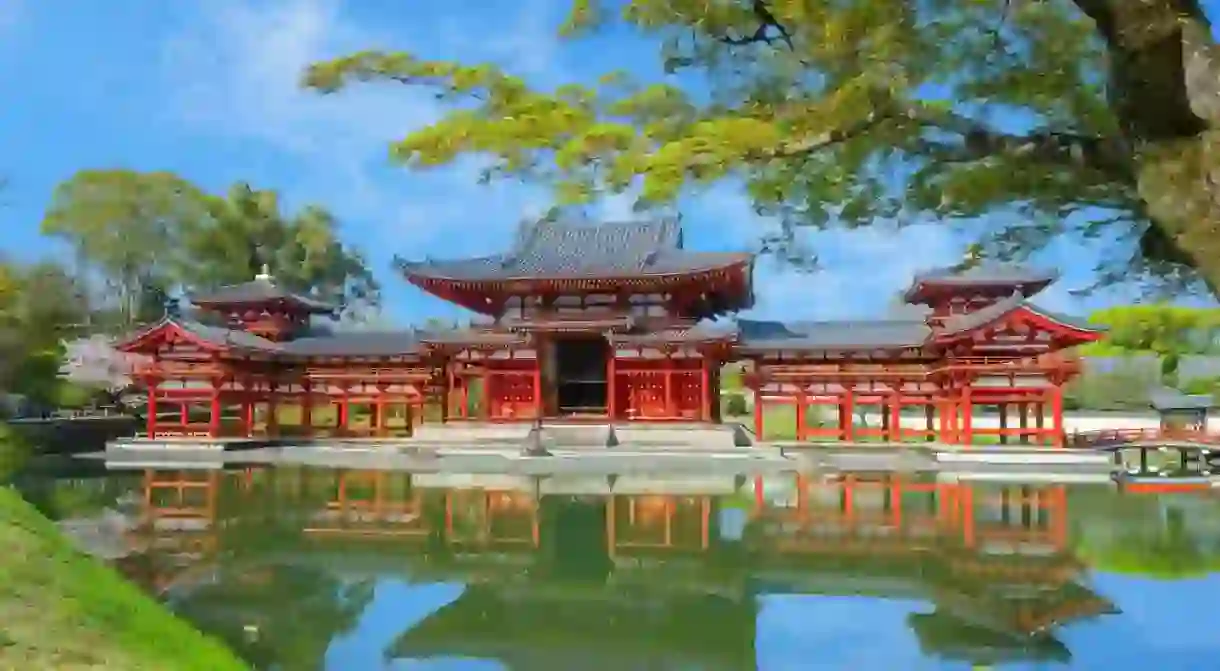10 Must-Visit UNESCO Sites in Kyoto

Kyoto was the ancient capital of Japan from 794 to 1868, a time when Japanese culture and traditions flourished. Today it is known for its historic and cultural value with thousands of temples, shrines and priceless national treasures. No trip to Kyoto is complete, without visiting at least some of these amazing sites. Here’s our list of the ten must-see UNESCO sites in Kyoto.
Byodo-in Temple

Byodo-in Temple, which can be seen on the back of Japan’s 10 yen coin, is the star attraction Uji, a small city to the southeast of Kyoto. The Phoenix Hall at Byodo-in Temple is one of the most beautiful buildings in all of Japan, and is stunningly perched over a serene reflecting pond. Uji is a great day trip out of the city and offers a unique cultural experience.
Daigo-ji Temple
Hiking Trail

Daigo-ji Temple is a sprawling temple complex located to the east of Kyoto in the Fushimi district. The main temple grounds are found at the base of a mountain and are connected to the temple buildings via a hiking trail which leads to the summit. It is famous for its five story pagoda and magnificent cherry blossoms in spring and fall foliage in autumn.
Saiho-ji Temple

Saiho-ji Temple, known as the “Moss Temple” for its superb moss garden, spirits you to another world with a beautiful Japanese garden carpeted by lush green moss. The spectacular heart-shaped garden was laid out in 1339 and surrounds a tranquil pond. Entrance to the temple and garden requires a reservation in advance.
Nijo Castle

Nijo Castle is a vast samurai castle that was the official Kyoto residence of the powerful Tokugawa Shogunate, rulers of Japan during the Edo Period (1603-1868). Designed both to impress and demoralise their rivals, the huge wooden buildings contain gorgeous palace style rooms with ornate sliding doors, elegantly decorated ceilings and tatami mats surrounded by beautiful gardens. The sprawling gardens are some of the best in Japan and are a must see in their own right.
To-ji Temple
Market

To-ji Temple is a huge ancient temple located to the south of Kyoto Station that served as one of the guardian temples of ancient Kyoto. In the southern part of the garden stands the Goju-no-to, a huge wooden five story pagoda, the highest in Japan at 57 meters (187 ft) tall. Check out Japan’s most famous flea market held on its serene grounds to pick up a classic Japanese souvenir such as a kimono or antique.
Tenryu-ji Temple

Tenryu-ji Temple in the western outskirts of Kyoto in Arashiyama is one of the city’s five great Zen temples. The tranquil temple has one of the most attractive Japanese stroll gardens in Kyoto. It is particularly stunning in spring with cherry blossoms and fall with autumn foliage. Outside the temple’s north gate is the magical Arashiyama Bamboo Grove, a must see attraction in Kyoto.
Ryoan-ji Temple
Buddhist Temple

Ryoan-ji Temple, also known as the “Temple of the Dragon at Peace” is famous for its iconic Zen rock garden, one of the symbols of Kyoto. The garden features 15 mystical rocks floating adrift in a sea of white sand and is the perfect spot to contemplate the world and the meaning of life.
Ginkaku-ji Temple
Botanical Garden, Park

Ginkaku-ji Temple, known as the “Silver Pavilion” often plays second fiddle to its more famous cousin, Kinkaku-ji Temple, but is a must see site in its own right. The Zen temple is home to an elegant wooden structure which is framed by one of the finest traditional Japanese gardens in all of the country. The temple started life in 1482 as a retirement villa for the Shogun to escape the turmoil of civil war and relax.
Kinkaku-ji Temple
Villa

Kinkaku-ji Temple, known as the “Golden Pavilion” is one of the most iconic and best known sites in all of Japan. It is truly an unforgettable site with the Zen Temple’s top two floors completely covered in brilliant gold leaf. The reflection of the shining gold in the mirror pond surrounding the building is truly spectacular. It was originally built in 1397 as a retirement villa for the Shogun and later converted into a Zen temple.
Kiyomizu-dera Temple

Kiyomizu-dera Temple is one of the most celebrated temples in Japan, and was in fact on the short list for the New 7 Wonders of the World. It offers a truly unique experience with something for everyone. The main hall is perched on a hill overlooking the city with a huge veranda offering spectacular views of Kyoto. Just below the hall, you can drink sacred water from a waterfall believed to bestow health, wisdom and longevity.
Tours & Trips in Japan
Historical Landmark
Dreaming of a Japanese adventure? Start with a sip of sake in the Japanese Alps, then snap photos of Kyoto’s ancient alleyways and discover ancient temples and shrines – maybe you’ll want to whizz along on the Bullet Train or travel on a budget, we have the package for you.













